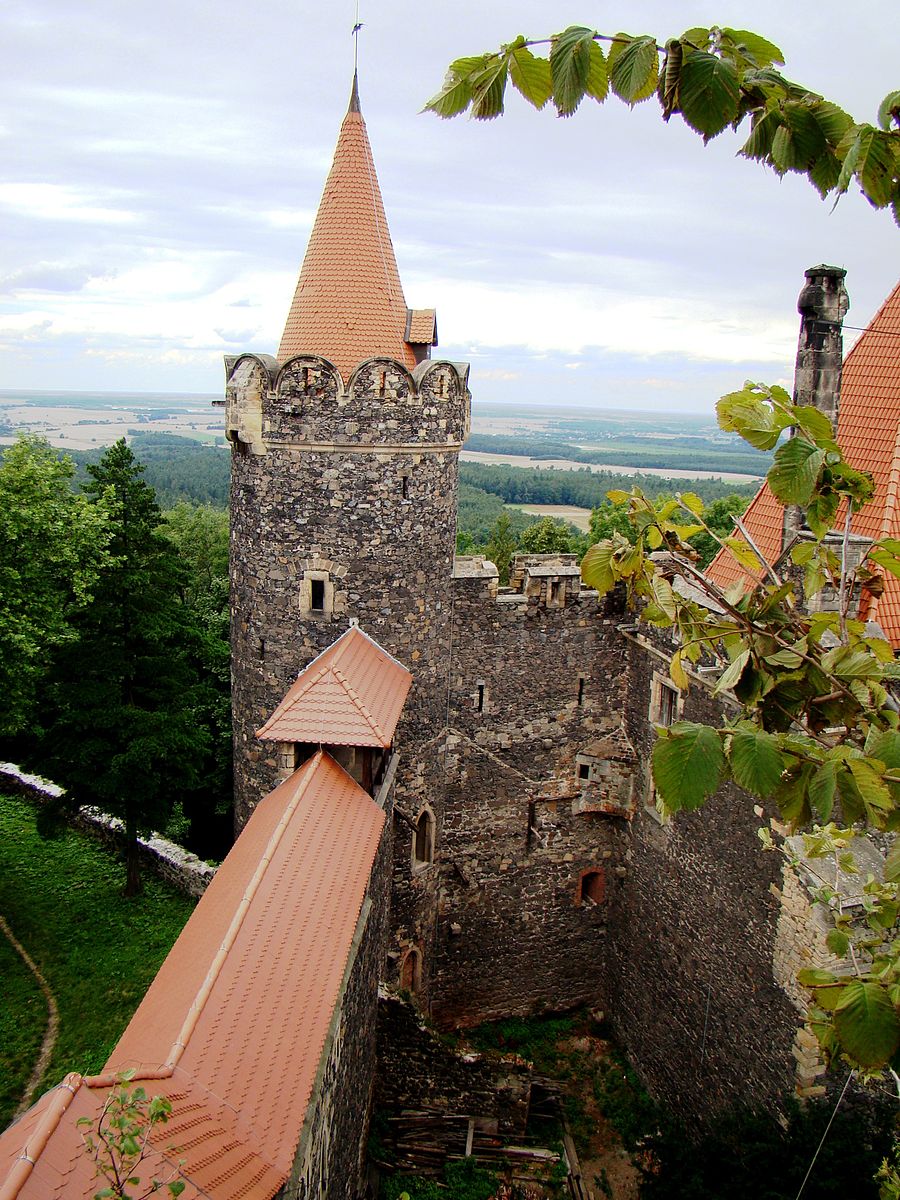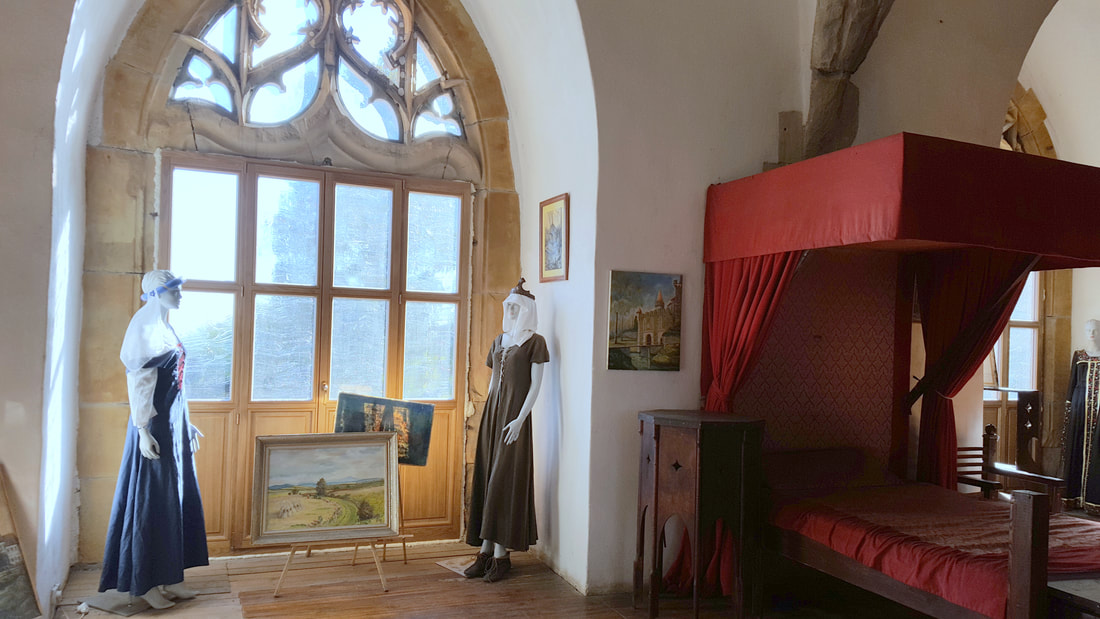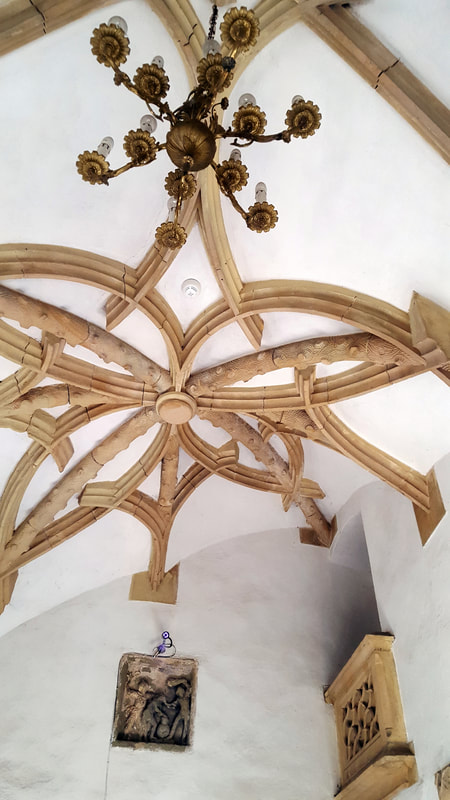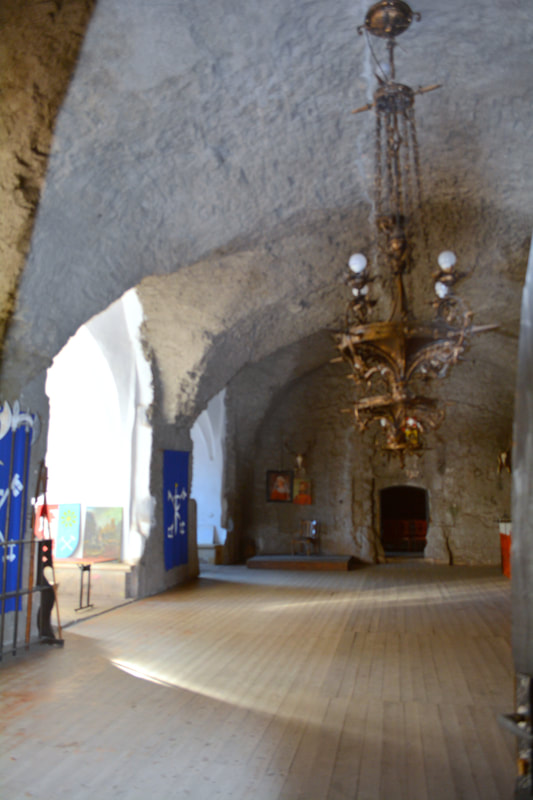Grodziec Castle
A Fortress upon a Volcano!
Above Photo by Enzo83 [CC BY-SA 3.0 pl (https://creativecommons.org/licenses/by-sa/3.0/pl/deed.en)]
Driving up the winding densely wooded road steeply ascending the cone shaped mountain to the very top, we were beginning to wonder if we were lost when we finally came upon construction workers busily repairing an arched entrance to what appeared to be the outer walls of a castle.
Since we could only hope that we were actually at ancient Grodziec Castle, we squeezed in among the parked trucks and cars belonging to the workers and walked up to the group pointing through the partially closed entrance and calling out “Zamek?” (castle) one of the few Polish words we had mastered at that point.
Thankfully, we were ushered through the huge partially constructed Gate-door with welcoming smiles and gestures.
Since we could only hope that we were actually at ancient Grodziec Castle, we squeezed in among the parked trucks and cars belonging to the workers and walked up to the group pointing through the partially closed entrance and calling out “Zamek?” (castle) one of the few Polish words we had mastered at that point.
Thankfully, we were ushered through the huge partially constructed Gate-door with welcoming smiles and gestures.
Grodziec Castle is perched at the very top of an extinct volcano which created a solid basalt cone. The first mention of what was originally a wooden stronghold comes from Pope Adrian IV’s bull (a public decree or charter issued by the Pope) issued on April 23, 1155. The new fortress replaced a Slavic hillfort. Its owner was Prince Bolesław I - The Tall.
Above Photo - Boleslaw I – The Tall by Konstanty Przykorski [Public domain]
The stronghold controlled an important east-west trade route, later called the Royal Route or the High Way. By 1245, Pope Innocent III mentioned the fortress as one of the greatest Silesian strongholds held by a castellan (a loyal king’s man). The next owner of the castle was the prince of Świdnica-Jawor, Bolko I, and then Prince Bolesław III of Legnica. Throughout this time, the castle was a wooden fortress.
In 1470, Grodziec passed into the hands of Frederic I of Legnica, and a stone castle was built.
In 1470, Grodziec passed into the hands of Frederic I of Legnica, and a stone castle was built.
Above Image is in the Public Domain - Author Unknown
From 1471-1473, the residential part of the castle was built by three master builders from the towns of Wrocław, Legnica, and Zgorzelec. According to their contract, the castle must include a round tower.
Above Photo by Edward Knapczyk [CC BY-SA 3.0 pl (https://creativecommons.org/licenses/by-sa/3.0/pl/deed.en)]
The castle descended to Frederic II in 1505 and around 1522, he began to rebuild the castle adding architectural details in the doors and windows and vaults to the ceilings.
The construction turned out so well, Grodziec Castle became the favorite seat of the prince and the place of numerous meetings. It became a leading late-gothic seat in Silesia, and was ideally suited to the then fashionable way of life, full of games, celebrations and knights’ tournaments.
The construction turned out so well, Grodziec Castle became the favorite seat of the prince and the place of numerous meetings. It became a leading late-gothic seat in Silesia, and was ideally suited to the then fashionable way of life, full of games, celebrations and knights’ tournaments.
The castle rooms are furnished to reflect this romantic era in Silesian history and are really interesting to explore. The tour starts in the main floor reception rooms. From the number of tables, I assume that these rooms are where the events of today are held!
A curving stone staircase takes you up to the private castle quarters.
The chapel is located at the far end of the family quarters. (this may not have been where the original chapel was located)
Yes... Every castle needs a toilet!
Another set of curving stone stairs take you to the lowest floor which has vaults that appear to be carved from stone.
Two bastions (protruding defense areas along the wall) were later added to the castle to protect it from Turkish invasion threat. The treasury of the Duchy of Legnica was brought to the castle, and, in 1553, Frederick III moved his court to Grodziec, to escape the plague in the capital town of Legnica.
During the Thirty Years War (also known as “The Wars of Religion”) the castle was robbed, damaged and eventually neglected and allowed to fall to ruin.
At the beginning of the 19th century, the complex belonged to Jan VI Hochberg, who carried out conservation and secured the ruins. Today Grodziec castle’s appearance is largely a result of reconstruction performed by B.Ebhardt again in the romantic style during the beginning of the 20th century when the castle was owned by Dr. Baron Wilibald von Dirksen.
At the beginning of the 19th century, the complex belonged to Jan VI Hochberg, who carried out conservation and secured the ruins. Today Grodziec castle’s appearance is largely a result of reconstruction performed by B.Ebhardt again in the romantic style during the beginning of the 20th century when the castle was owned by Dr. Baron Wilibald von Dirksen.
Image Above: Das Burgthor der Ruine Gröditzberg by Carl Mattis [Public domain]
Here I will again rave about the benefits of traveling during the shoulder season. The castle was open, but it was completely empty! We spent 30 minutes meandering throughout the castle rooms and never saw another person. It was wonderful (and perfect for photography purposes!). On the downside, a few of the upper rooms and ramparts were closed to us since it was so late in the year.
The castle is absolutely charming and now hosts events including jousting, tournaments and festivals. It also hosts guests overnight and the stay can also include a night tour of the castle. The castle has a small buffet on the grounds. Grodziec Castle is a lovely place to spend an hour wandering the rooms and ramparts and I would definitely come back to watch knights joust or take a spooky night tour!
The castle is absolutely charming and now hosts events including jousting, tournaments and festivals. It also hosts guests overnight and the stay can also include a night tour of the castle. The castle has a small buffet on the grounds. Grodziec Castle is a lovely place to spend an hour wandering the rooms and ramparts and I would definitely come back to watch knights joust or take a spooky night tour!
A couple of event pics below!
Photo Above by Platanacero [Public domain]
Photo Above by Platanacero [Public domain]
To find out more about visiting Grodziec Castle click here! (Sorry, the palace website on Facebook is not currently in English, but you can find visiting information in English at TripAdvisor and other websites as well.)


































